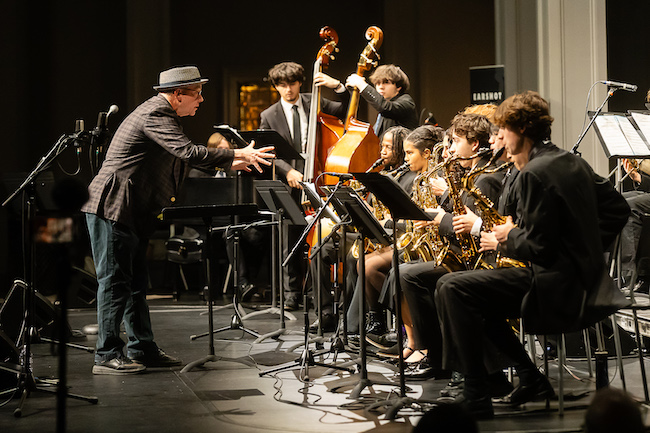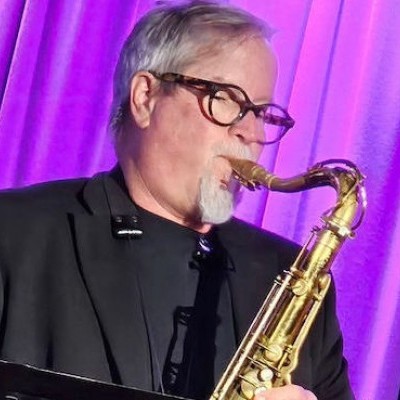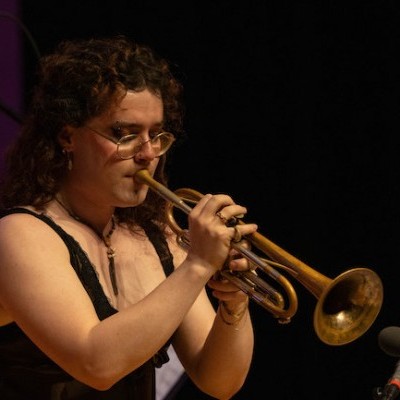Oct 28, 2025 10:47 AM
In Memoriam: Jack DeJohnette, 1942–2025
Jack DeJohnette, a bold and resourceful drummer and NEA Jazz Master who forged a unique vocabulary on the kit over his…

Wayne Horvitz contributed a seven-night celebration of Butch Morris, Sun Ra and Julius Hemphill during Seattle’s Earshot Jazz Festival.
(Photo: Lisa Hagen Glynn)The 36th edition of Seattle’s Earshot Jazz Festival offered a two-track collaboration that harkened back to its exuberant early days. In 1990, keyboardist Wayne Horvitz, who had just moved to town, helped Earshot create the International Creative Music Orchestra, featuring Horvitz mentor Butch Morris, Conrad and Johannes Bauer, ROVA, Andrew Cyrille and others. Last fall, Horvitz contributed a seven-night celebration of Morris, Sun Ra and Julius Hemphill called “What’s Going On: Conduction, Improvisation and the Culture of Structure” that spotlighted local as well as visiting artists, nicely complementing Earshot’s two-and-half-week series, which ran Oct. 17–Nov. 3.
Earshot Executive Director John Gilbreath, 76, has been involved with Earshot since that first 1990 collaboration. It was fitting that he announced his retirement just as Earshot was highlighting its enduring focus on creative collaboration and local music.
“It’s been an incredible run,” said Gilbreath, adding that a succession plan had been on the table since 2018, before COVID rudely interrupted it. During a search for new leadership, arts consultant Meriça Whitehall will serve as interim director.
Gilbreath went out with a bang: a panorama of terrific shows in venues all over town, including the Wayne Shorter Tribute Band, violinist Jenny Scheinman, Seattle-raised trumpeter Riley Mulherkar, pianist Myra Melford’s Fire and Water, Belgium’s Flat Earth Society Orchestra, Seattle artists Bill Anschell (piano), festival artist-in-residence Skerik (saxophone) and pianist Vijay Iyer.
Mark Turner bravely stepped into Wayne Shorter’s shoes with the late saxophonist’s erstwhile bandmates Danilo Perez (piano), John Patitucci (bass) and Brian Blade (drums) for a set at Town Hall of almost unbearable tension, shattered by explosive releases. Patitucci was on fire. Scheinman played at Horvitz’s cozy South End club, the Royal Room, in a band with former Seattle pianist Carmen Staaf, applying a light touch, supple fiddler’s arm and transcendent relationship with the natural world to a generous set of seemingly egoless ensemble music. Welcomed warmly as a hometown hero made good to Langston (Seattle’s Black arts center), Mulherkar offered a focused brace of tunes from his enthusiastically received debut album as a leader, Riley. At the Town Hall Forum Melford, who also has Seattle roots, created hypnotic, mythical spaces quivering with intention, with her all-star band Fire and Water featuring Tomeka Reid (cello), Ingrid Laubrock (reeds), Mary Halvorson (guitar) and fierce newcomer Lesley Mok (drums). Belgium’s 15-piece Flat Earth Society filled the same room with cartoonish jollity buoyed by virtuoso chops, a theatrical mashup of Sun Ra and Willem Breuker.
Downtown, at Benaroya Hall’s Nordstrom Recital Hall, Iyer’s stunning trio recital with drummer Jeremy Dutton and bassist Linda May Han Oh lifted the festival to its pinnacle. Thunderous and muscular, yet with a bell-like tone, Iyer integrated the long lines and internationally inspired scales that initially inspired him with earthy jazz and blues feeling.
Seattleites got some love, too. At Seattle Center’s Alhadeff Studio, Bill Anschell, with Jeff Johnson (bass) and D’Vonne Lewis (drums), played a standards set showcasing a spontaneity and relaxed elasticity of form that favorably recalled Ahmad Jamal. Skerik added soulful zest to several What’s Going On ensembles and gave his tender, lyrical side some space in a group featuring three-quarters of the once-popular Seattle quartet, Industrial Revelation.
What’s Going On unfolded at the Royal Room. The festival-within-a-festival brilliantly illuminated the idiosyncratic and innovative ways Morris, Hemphill and Sun Ra created structure around free improvisation. It featured several Morris-inspired “conductions” — ensemble music consisting of written or improvised material cued from the podium. Sharing the helm with Seattle Modern Orchestra co-leader Julia Tai, Horvitz kicked off the series with his hauntingly beautiful “188 Sullivan” (appropriately inspired by the historic meeting of improvisor Charlie Parker and composer Edgard Varèse). Hemphill’s “One Atmosphere And String Quartet” sparkled with a taunting, playground spirit; Horvitz’s “Worst Planet Yet,” composed of Sun Ra elements, fell playfully in and out of raggedy swing. Seattle trumpeter Stephanie Richards led the most impressive conduction, a totally improvised piece that gelled remarkably in real time.
Reed man and Hemphill archivist Marty Ehrlich’s exposition of Hemphill’s Dogon, A.D. brought out its strength, elegance and tumbling exuberance while also treating the crowd to rare insights about the music. In a large ensemble conduction nodding to Cecil Taylor, pianist Robin Holcomb (married to Horvitz) happily reminded listeners of her free-jazz roots. Another exhilarating Hemphill set featured a phalanx of six saxophones in a relentless barrage of groove, blues and skronk; yet another, also drawn from Sun Ra, conjured Ra’s interplanetary soul to the room. The final concert featured a smashing rendition of Morris’ gorgeous album Dust To Dust. DB

Jack DeJohnette boasted a musical resume that was as long as it was fearsome.
Oct 28, 2025 10:47 AM
Jack DeJohnette, a bold and resourceful drummer and NEA Jazz Master who forged a unique vocabulary on the kit over his…

“I’ve told students, ‘I don’t mind if you use AI for this or that project,’” says MIT’s Pascal Le Boeuf. “‘But you need to tell me.’”
Sep 18, 2025 11:14 AM
A standard joke when it comes to discussing artificial intelligence, or AI, is that it’s developing so rapidly that…

Chuck Manning Works for NASA … and plays jazz.
Sep 18, 2025 11:23 AM
Congratulations! After years of study, you’ve earned your degree in jazz performance. But let’s face it: Making a…

Always a sharp dresser, Farnsworth wears a pocket square given to him by trumpeter Art Farmer. “You need to look good if you want to hang around me,” Farmer told him.
Sep 23, 2025 11:12 AM
When he was 12 years old, the hard-swinging veteran drummer Joe Farnsworth had a fateful encounter with his idol Max…

“Make time and energy to meet people and make friends,” suggests Millie Ahearn, a student at DePaul University.
Sep 18, 2025 11:32 AM
For many students, the transition into a collegiate jazz program can feel overwhelming — new peers, unfamiliar…